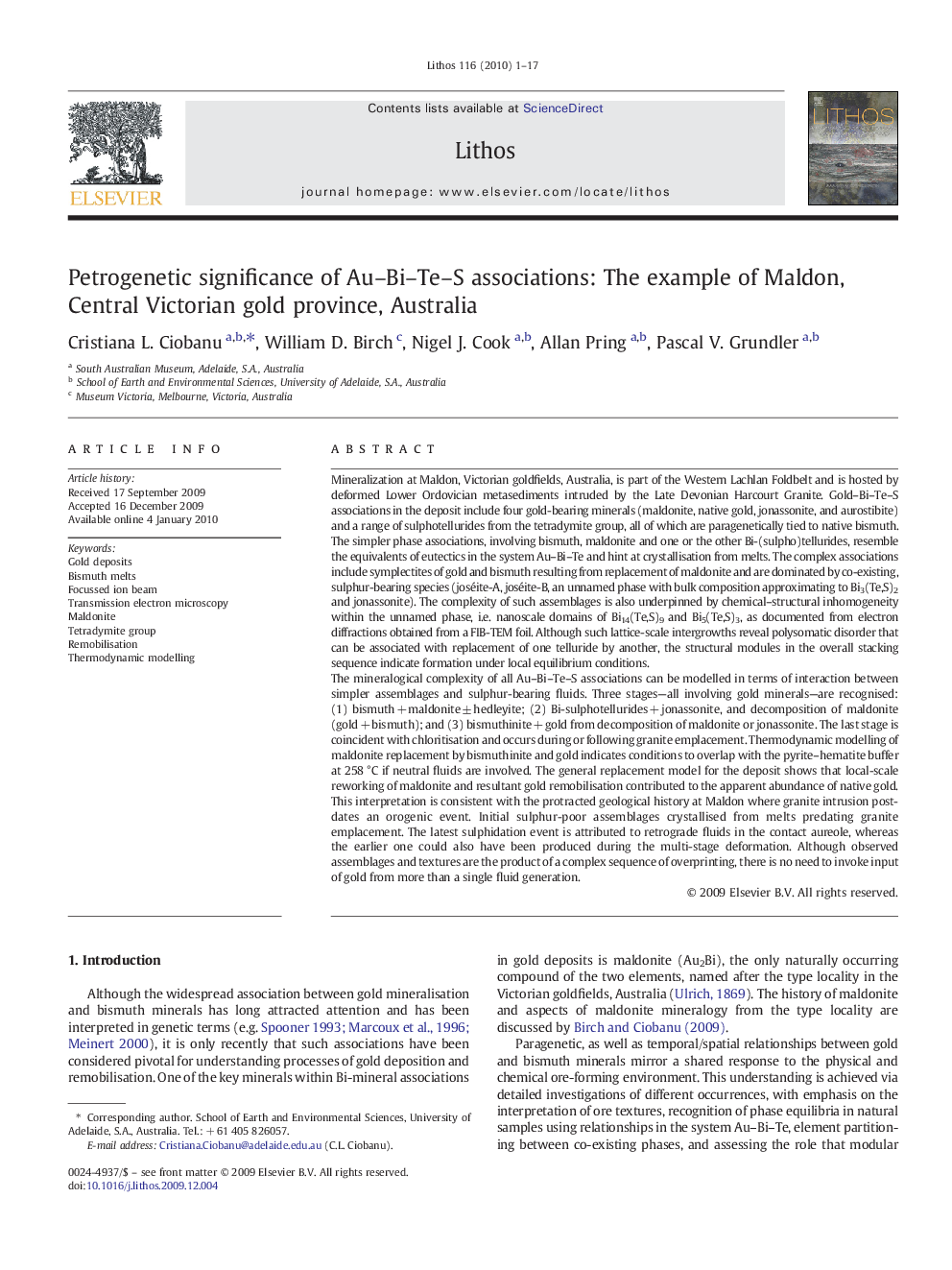| کد مقاله | کد نشریه | سال انتشار | مقاله انگلیسی | نسخه تمام متن |
|---|---|---|---|---|
| 4717103 | 1638734 | 2010 | 17 صفحه PDF | دانلود رایگان |

Mineralization at Maldon, Victorian goldfields, Australia, is part of the Western Lachlan Foldbelt and is hosted by deformed Lower Ordovician metasediments intruded by the Late Devonian Harcourt Granite. Gold–Bi–Te–S associations in the deposit include four gold-bearing minerals (maldonite, native gold, jonassonite, and aurostibite) and a range of sulphotellurides from the tetradymite group, all of which are paragenetically tied to native bismuth. The simpler phase associations, involving bismuth, maldonite and one or the other Bi-(sulpho)tellurides, resemble the equivalents of eutectics in the system Au–Bi–Te and hint at crystallisation from melts. The complex associations include symplectites of gold and bismuth resulting from replacement of maldonite and are dominated by co-existing, sulphur-bearing species (joséite-A, joséite-B, an unnamed phase with bulk composition approximating to Bi3(Te,S)2 and jonassonite). The complexity of such assemblages is also underpinned by chemical–structural inhomogeneity within the unnamed phase, i.e. nanoscale domains of Bi14(Te,S)9 and Bi5(Te,S)3, as documented from electron diffractions obtained from a FIB-TEM foil. Although such lattice-scale intergrowths reveal polysomatic disorder that can be associated with replacement of one telluride by another, the structural modules in the overall stacking sequence indicate formation under local equilibrium conditions.The mineralogical complexity of all Au–Bi–Te–S associations can be modelled in terms of interaction between simpler assemblages and sulphur-bearing fluids. Three stages—all involving gold minerals—are recognised: (1) bismuth + maldonite ± hedleyite; (2) Bi-sulphotellurides + jonassonite, and decomposition of maldonite (gold + bismuth); and (3) bismuthinite + gold from decomposition of maldonite or jonassonite. The last stage is coincident with chloritisation and occurs during or following granite emplacement. Thermodynamic modelling of maldonite replacement by bismuthinite and gold indicates conditions to overlap with the pyrite–hematite buffer at 258 °C if neutral fluids are involved. The general replacement model for the deposit shows that local-scale reworking of maldonite and resultant gold remobilisation contributed to the apparent abundance of native gold. This interpretation is consistent with the protracted geological history at Maldon where granite intrusion post-dates an orogenic event. Initial sulphur-poor assemblages crystallised from melts predating granite emplacement. The latest sulphidation event is attributed to retrograde fluids in the contact aureole, whereas the earlier one could also have been produced during the multi-stage deformation. Although observed assemblages and textures are the product of a complex sequence of overprinting, there is no need to invoke input of gold from more than a single fluid generation.
Journal: Lithos - Volume 116, Issues 1–2, April 2010, Pages 1–17